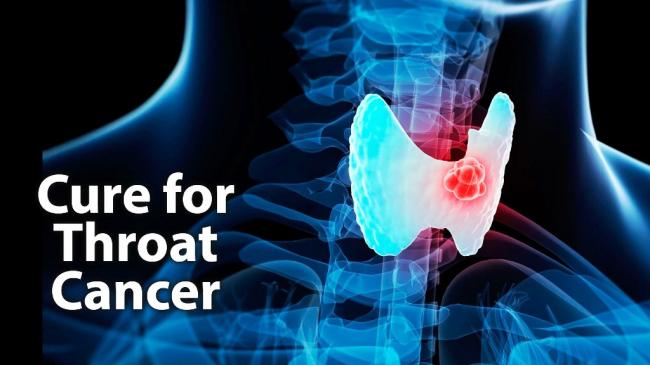
However, a new study by Johns Hopkins Bloomberg School of Public Health researchers shows that the risk of developing HPV-related throat cancer remains generally low.
There has been interest in the possibility of testing for oral HPV infection to identify people who are at high risk for HPV-related throat cancer. The findings, which was published in the Annals of Oncology on Oct. 20, suggest that such testing is not justified at this time.
“Currently available tests for the presence of oral HPV infections are not very predictive of oropharyngeal cancer risk—most people who have an oral HPV infection will eventually clear it on their own,” says study co-author Gypsyamber D’Souza, PhD, an associate professor in the Bloomberg School’s departments of Epidemiology and International Health.
“Despite recent increases in its incidence, HPV-associated oropharyngeal cancer remains a rare cancer in the U.S.,” says co-author Carole Fakhry, MD, MPH, an associate professor in the Johns Hopkins School of Medicine and Bloomberg School’s Department of Epidemiology.
HPV is transmitted to the mouth and throat mostly by performing oral sex and appears to cause about 70 percent of oropharyngeal cancers. These cancers appear at the back of the throat, base of the tongue, or tonsils. Each year in the United States, there are about 12,000 cases of these HPV-associated cancers, more than 80 percent of them in men, according to the Centers for Disease Control and Prevention. The incidence of HPV-associated oropharyngeal cancer has been rising since the 1980s, and in the past two decades has doubled among men. HPV is also considered the chief cause of most cervical, vaginal, penile and anal cancers.
The Bloomberg School researchers made use of behavioral and medical data from the National Health and Nutrition Examination Survey (NHANES) from 2009 to 2014 on 13,089 adults—data that included oral HPV tests. Oral infections with the dozen HPV types known to cause oropharyngeal cancer (especially HPV 16, the type that causes most throat cancers) were present at low prevalence in every defined group in the study, the researchers found. Women ages 20 to 69, for example, had a frequency of infection of just over 1 percent, compared to 6 percent for men ages 20 to 69. Men ages 50 to 59 were most likely to have an infection (8.1 percent) of any age group.
Oral sex was clearly associated with a higher prevalence of infection, the researchers found, although the highest infection prevalence was seen only among men. Women with 10 or more lifetime oral sex partners had a relatively low 3.0 percent prevalence of infection, whereas for men with 10 or more lifetime oral sex partners the figure was 14.4 percent. Prevalence of infection for those reporting zero or one lifetime oral sex partner was consistently low (between 0 and 2.4 percent).
Smoking also was associated with higher oral HPV prevalence. Prevalence was 14.9 percent among men who smoked and reported five or more lifetime oral sex partners, compared to less than half that (7.3 percent) for men who reported five or more lifetime oral sexual partners but did not smoke.
Infection with any potentially cancer-causing HPV type is not as predictive of cancer risk as it may seem, the researchers note. In part, that is because some HPV types are much more cancer-causing than others. In fact, one type—type 16—is thought to cause more than 90 percent of all HPV-driven oropharyngeal cancers. The NHANES data showed that oral HPV 16 prevalence was very low on average in all groups, ranging from 0.1 percent in women ages 60 to 69 to 2.4 percent in men ages 60 to 69.
Consistent with this low prevalence was the data on actual oropharyngeal cancer cases from the National Cancer Institute’s Surveillance, Epidemiology and End Results (SEER) registry. According to the SEER data, men have a lifetime risk of these cancers of only 0.7 percent, while for women the lifetime risk is just 0.2 percent.
“For most people these data should be very reassuring, as they show that their risk of oropharyngeal cancer is very low,” D’Souza says.
Mass screening for oral HPV infection is not advisable, she adds, because existing tests, for example, of oral HPV 16 DNA, currently have more harms (from false positives) than benefits. A positive result on such a test would tend to cause anxiety for the person involved, without conferring a strong benefit by accurately predicting the chance of getting cancer.
D’Souza, Fakhry and their colleagues in this field are working to develop tests that are much more predictive of HPV-oropharyngeal cancer. “We have ongoing studies of strategies for using biomarkers to determine and stratify people’s oropharyngeal cancer risk,” says Fakhry.
A preventive vaccine (Gardasil) against HPV types 6, 11, 16, and 18 has been in widespread use for a decade, and a version that also protects against five other HPV types was FDA-approved in 2014.
These vaccines won’t clear existing HPV infections. However, the researchers say, the vaccines should eventually bring all HPV-associated cancer rates down by preventing new infections.
“Understanding personal risk of oropharyngeal cancer: risk-groups for oncogenic oral HPV infection and oropharyngeal cancer,” was written by G. D’Souza, T.S. McNeel, and C. Fakhry.
The research was supported by the National Institute of Dental and Craniofacial Research at the National Institutes of Health (R35 DE026631).
Support Our Journalism
We cannot do without you.. your contribution supports unbiased journalism
IBNS is not driven by any ism- not wokeism, not racism, not skewed secularism, not hyper right-wing or left liberal ideals, nor by any hardline religious beliefs or hyper nationalism. We want to serve you good old objective news, as they are. We do not judge or preach. We let people decide for themselves. We only try to present factual and well-sourced news.







